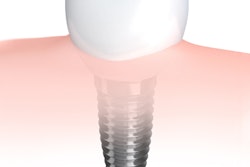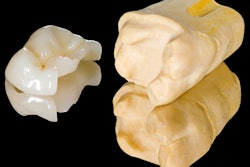
How do the long-term results of short implants compare with those of long implants placed after maxillary sinus augmentation? To get a clear look at the risks and benefits of each, researchers conducted a comprehensive review and meta-analysis of randomized controlled trials that directly compared the two methods.
They examined survival rates, marginal bone loss, and the occurrence of biological and prosthetic complications for both types of implants, finding similar results with the two implantation strategies but different rates for both biological and prosthetic complications. They published their findings in Brazilian Oral Research, September 13, 2018).
"Short implant placement is an effective alternative because of fewer biological complications and similar survival and marginal bone loss than long implant placement with maxillary sinus augmentation," wrote the review authors, led by Ronaldo Silva Cruz of the University of São Paulo Araçatuba Dental School in Brazil. "However, the risk of mechanical complications associated with the prostheses fitted on short implants should be considered."
Does length matter?
A lack of sufficient bone necessitates the placement of short implants in some situations, while maxillary sinus augmentation with or without bone grafting, which allows subsequent long implant placement, is another option. However, each of these procedures has both benefits and drawbacks, the researchers noted.
The placement of short implants typically is considered less invasive, with a shorter surgical duration and lower morbidity rates and costs. But the bone-to-implant contact area may be small, leading to worse stability and osseointegration, according to previous research.
Maxillary sinus augmentation, on the other hand, is a complex surgical procedure that can have postoperative complications that increase morbidity rates and incur greater cost and treatment duration than with conventional implant placement, studies have found.
To learn more about results with these options, the review authors conducted the current systematic review to compare survival rates, marginal bone loss, and biological and prosthetic complications with short implants (length of 8.5 mm or smaller) versus long implants (greater than 8.5 mm) placed after maxillary sinus augmentation.
They performed a comprehensive search for randomized controlled trials published through January 2018 comparing placement in the posterior maxilla of short implants without maxillary sinus augmentation versus long implants with maxillary sinus implantation in human participants with follow-up of longer than six months.
The reviewers identified 11 studies that met their inclusion criteria. The studies included 420 participants with a mean age of 52.2 years who received 437 short implants and 474 long implants after maxillary sinus augmentation and were followed for nine to 36 months.
Dental surgeons used the following techniques in these studies:
- Osteotome sinus floor elevation
- Crestal sinus lift
- Lateral sinus lift
For sinus augmentation, they performed bone grafting, most commonly with xenografts.
The length of short implants in the studies ranged from 4 mm to 8.5 mm, and long implants from 10 mm to 15 mm. Implant diameter ranged from 3.75 mm to 7.0 mm. Five studies used internal connections, four used external connections, and two did not report the type of connections.
Of the 911 implants placed, 18 (1.97%) failed, of which nine were short (2.05%) and nine were long (1.89%). Before loading, six short and six long implants were lost. After loading, three short and three long implants were lost. The researchers found no difference in the survival rates of short and long implants.
They included eight studies in their meta-analysis of marginal bone loss, finding that the mean amount for short implants was 0.86 mm (range of 0.10 mm to 1.41 mm) and 0.99 mm (range 0.10 mm to 1.74 mm) for long implants, with no significant difference between them.
"Although there was no difference in marginal bone loss in the present systematic review, it is important to note that several studies observed greater marginal bone loss with long implants placed after maxillary sinus augmentation," the authors wrote.
Among the eight studies that reported biological complications, they found a significantly lower complication rate with short than long implants (p < 0.00001). The most common complications experienced with long implants were perforated sinus membrane, palpation pain, pain and swelling after surgery, chronic sinus infection, and postoperative bleeding.
The researchers found a higher rate of prosthetic complications with short implants than long implants in the 10 studies that reported this data (p = 0.010). These complications included fracture of the metal structures in the restoration, ceramic fractures, debonding, abutment fracture, and screw loosening.
Evaluate results with care
The authors noted that their results should be considered with care due to the following limitations of some of the studies included in their review:
- Short follow-up period
- Small sample size
- Lack of reporting of failure rates for variables, such as diameter, implant-abutment connection, and crown-to-implant ratio
- Implant length selection by the surgeon based on individual clinical factors
"Further randomized controlled trials that include parameters that may influence the findings, such as crown-to-implant ratio, splinting factor, implant geometry, and implant surface, should be conducted," they concluded.



















